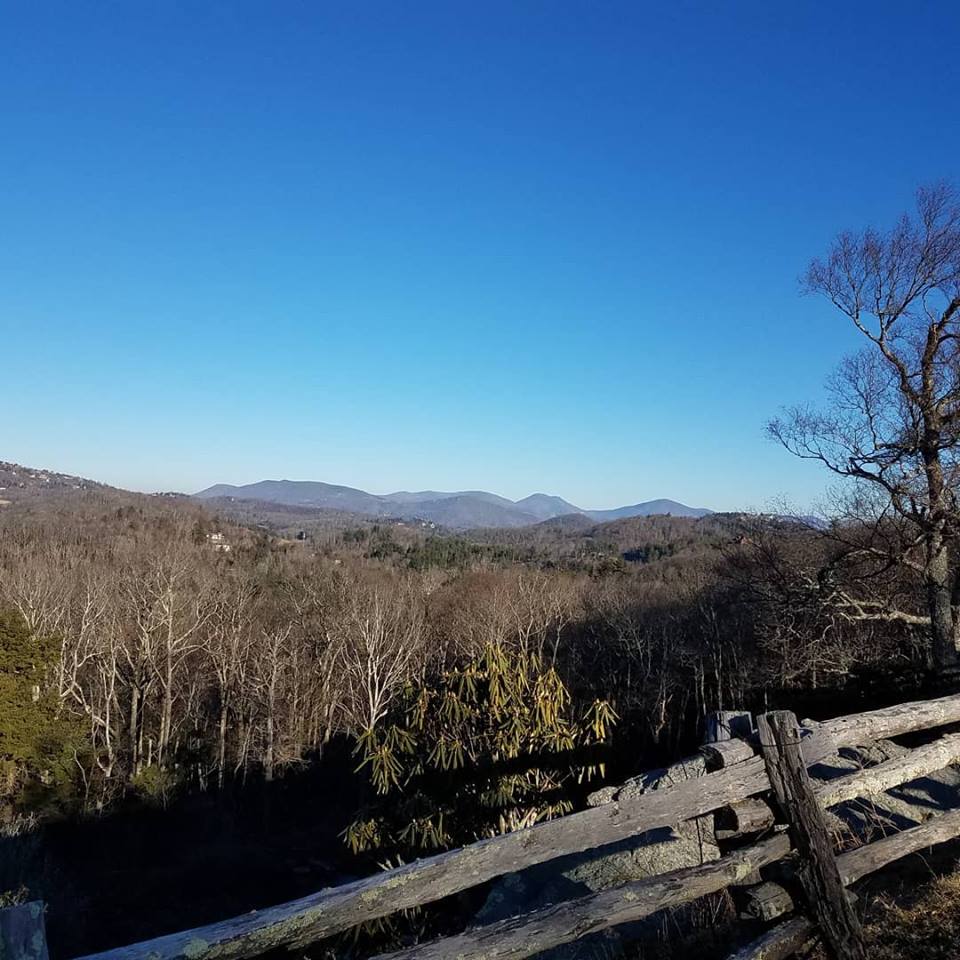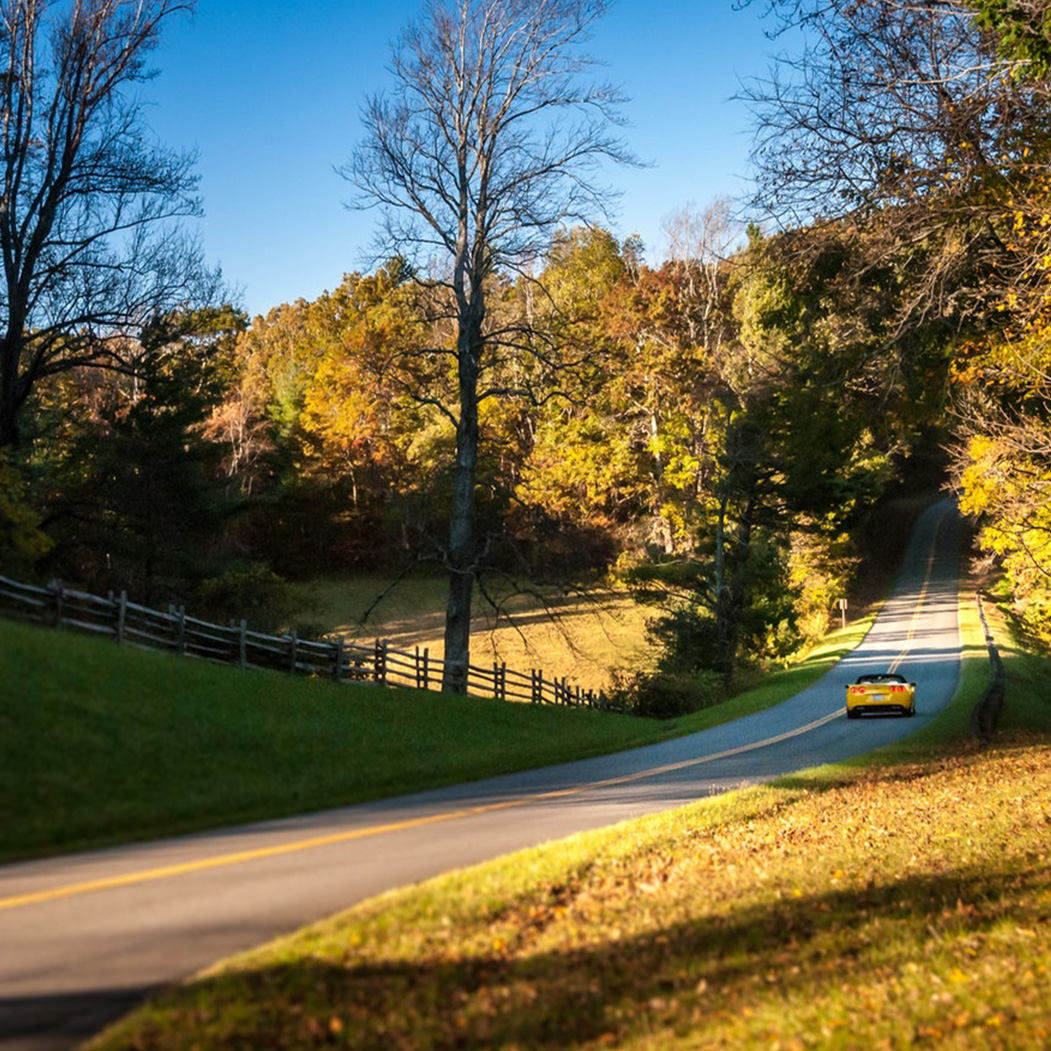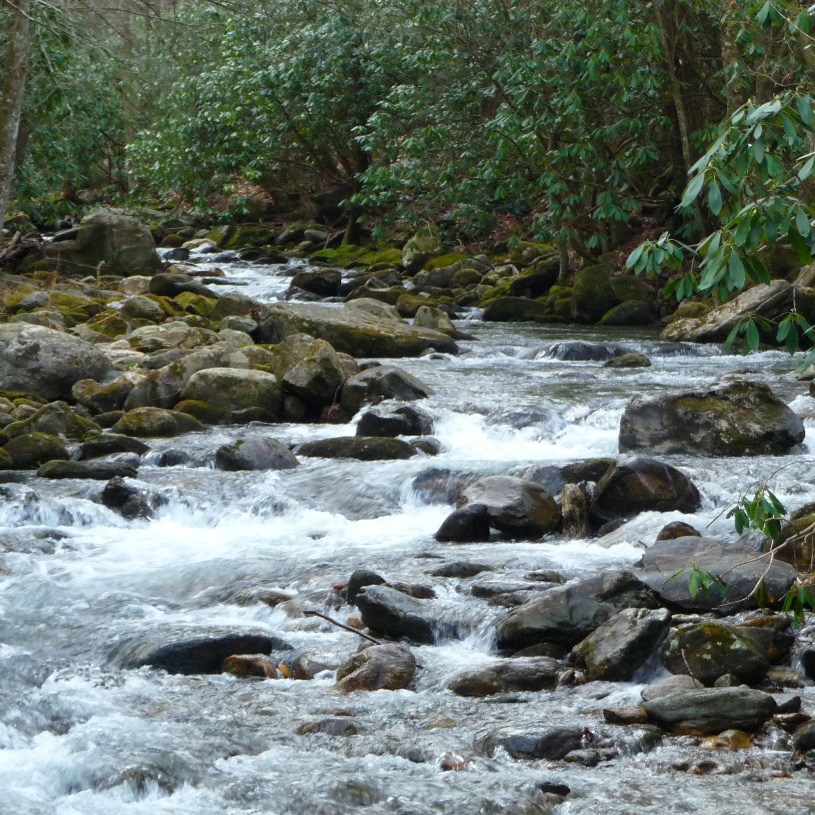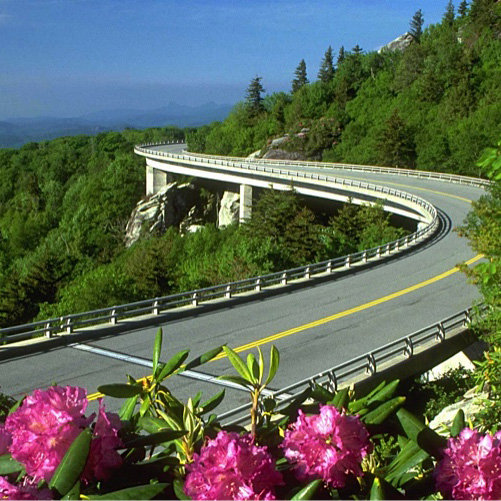Blue Ridge Parkway History
Blue Ridge Parkway History
The construction of the Blue Ridge Parkway came about through a combination of circumstances, which could never be duplicated. Although the idea of a road that would reach across the southern Appalachian Mountains had been discussed from time to time, serious discussion of the building of the Blue Ridge Parkway started during the great depression of the 1930’s.
The Public Works Administration prepared a comprehensive program that would include the repair and construction of public highways. In that year of 1933, President Franklin D. Roosevelt visited the Skyline Drive in Virginia. The Civilian Conservation Corps had built this roadway. This organization had been formed for the purpose of giving work to many of the men who needed it during these hard times. It was suggested to the President that a similar road could be constructed to connect Shenandoah National Park in Virginia to the Great Smoky Mountains National Park to the south in North Carolina and Tennessee. The President approved this plan and by late 1933, sixteen million dollars was allotted for the construction of a scenic highway linking the two parks.
A Partnership
The road was to be a joint project of Virginia, North Carolina, and the Federal Government. The states were to acquire rights-of-way while the Government would provide funding for design, supervision, and construction. Survey parties were in the field during 1934 and the first 12-mile section was begun on September 11, 1935. The first section of the Parkway extended south near the Virginia-North Carolina State line.
On June 30, 1936, the Blue Ridge Parkway was taken into the National Park Service. The significance of this act was to show that this highway was now considered a resource of national merit. From that time, Parkway policy has been governed by the National Park Service . . .”to conserve the scenery and the natural and historic objects and the wildlife. . .and to provide for the enjoyment of the same in such manner and by such means as will leave them unimpaired for the enjoyment of future generations.” The real story of the Blue Ridge Parkway is a story of people. Since its beginning at Cumberland Knob well over 50 years ago, it has been a near miracle that such a project was ever completed. In the beginning, although public officials from Virginia, North Carolina, and Tennessee all agreed that the road was needed, none agreed on what route it should follow.
Politics
There was much political maneuvering involved. This involvement not only included the President and Congress, but also took into account several Government agencies, 29 counties, and numerous local governments. The first task facing the planners of the Parkway was to locate a corridor for the 470 mile highway through a part of the country that contained few maps, few roads, and little knowledge of many areas – some possibly never before surveyed for any purpose. The landscape architects of that time just had to go from ridge to ridge, checking out where the “best views” were and where it might be feasible to build a tunnel or bridge for this scenic road. The next step was to start negotiating for the rights-of-way. This land was owned mostly by people who had settled in the mountains, years before and each parcel had to be dealt with on an individual basis. The mountain people were in favor of the road; however, many of them were under the impression it would serve as a highway to benefit them for commercial use. Some of the lawmakers were also under this impression. It now became necessary for the Government to define a National Parkway. There had never been a project of this size undertaken by the Federal Government before; a 470-mile scenic roadway for the purpose of recreation. Policies had to be made to cover this situation. Eventually, the “scenic highway” evolved into a long park containing a road designed to please viewers with its beautiful scenery. This meant that it was not only necessary to protect the road itself, but would also include protecting the scenic views. In this way, the policy of land leases and scenic easements was begun. This policy has been handled with tact and diplomacy through the years.
Keeping good public relations has always been a primary concern to the Blue Ridge Parkway as well as the National Park Service in general. By working together, mountain people and Parkway personnel have cooperated in creating a regional treasure in which we can all take pride. Purchases of land adjoining the Parkway went on for many years. Some land was transferred by interagency agreement from the Forest Service. In several years, the Parkway passes through Forest Service land. There have also been significant donations of private land. These include the Moses Cone Estate (1948), the Julian Price Memorial Park donated by the Jefferson Standard Life Insurance Company (1949), the Linville Falls recreation area, purchased and donated by John D. Rockefeller, Jr. (1952).
Construction
Construction of the roadway did not wait for all this land negotiation to take place. It was constructed in various stages and involved a great many contractors from all over the United States. Highly skilled rock masons were engaged to build the bridges and walls. There was also a tremendous project in reclaiming the beauty of the land, for that which had been owned had been burned over, lived on, and trees removed with no one giving a thought to the protection of the environment. It is to the credit of the Park planners that not only did they restore the beauty of the land, but also were able to teach others about soil conservation, fire control, erosion control, and crop rotation. The National Park Service has been of inestimable value to this country in the preservation of our most important natural resources – not only here in our park, but all over the United States. The actual labor force for the building of the Parkway was composed primarily of local residents. In the early days of construction – as before mentioned, during the great depression – the Government policy at that time was to provide relief for the many jobless in the areas covered by the route of the highway. Only specialized labor was brought in from the outside. All other (approximately 90 percent) came from local sources. There are many residents still around in these mountain areas who took part in the construction or whom had relatives involved in the project. Construction lagged during World War II though there was a band of conscientious Objectors who did some work at the time.
The next to last section was completed in the 1960’s. This section was opened around the city of Asheville, North Carolina. The final construction was completed in 1987 when the Linn Cove Viaduct was completed around Grandfather Mountain. The bridge encircles the mountain and was designed in a fashion to destroy as few of the trees as possible and to preserve the beauty and grandeur of the scenery. It is a true masterpiece of construction. The Blue Ridge was the world’s first parkway designed exclusively for leisure travel and recreational use. The value of such an asset to those who visit cannot be measured. It is of tremendous value to the cities, towns, and communities through which it passes. It helps the economy in giving jobs to many persons; businesses of all types profit from its usage, and we are all proud to be a part of this famous asset. It has been said of the Blue Ridge Parkway by some grateful traveler that it “Refreshes the human spirit”. NOTE: This brief history was compiled from records on file. It only covers the highlights of this scenic road – its scenic road – its purpose and reason for construction. There are several books available giving more details and giving credit to those whom were responsible for this gigantic project.



